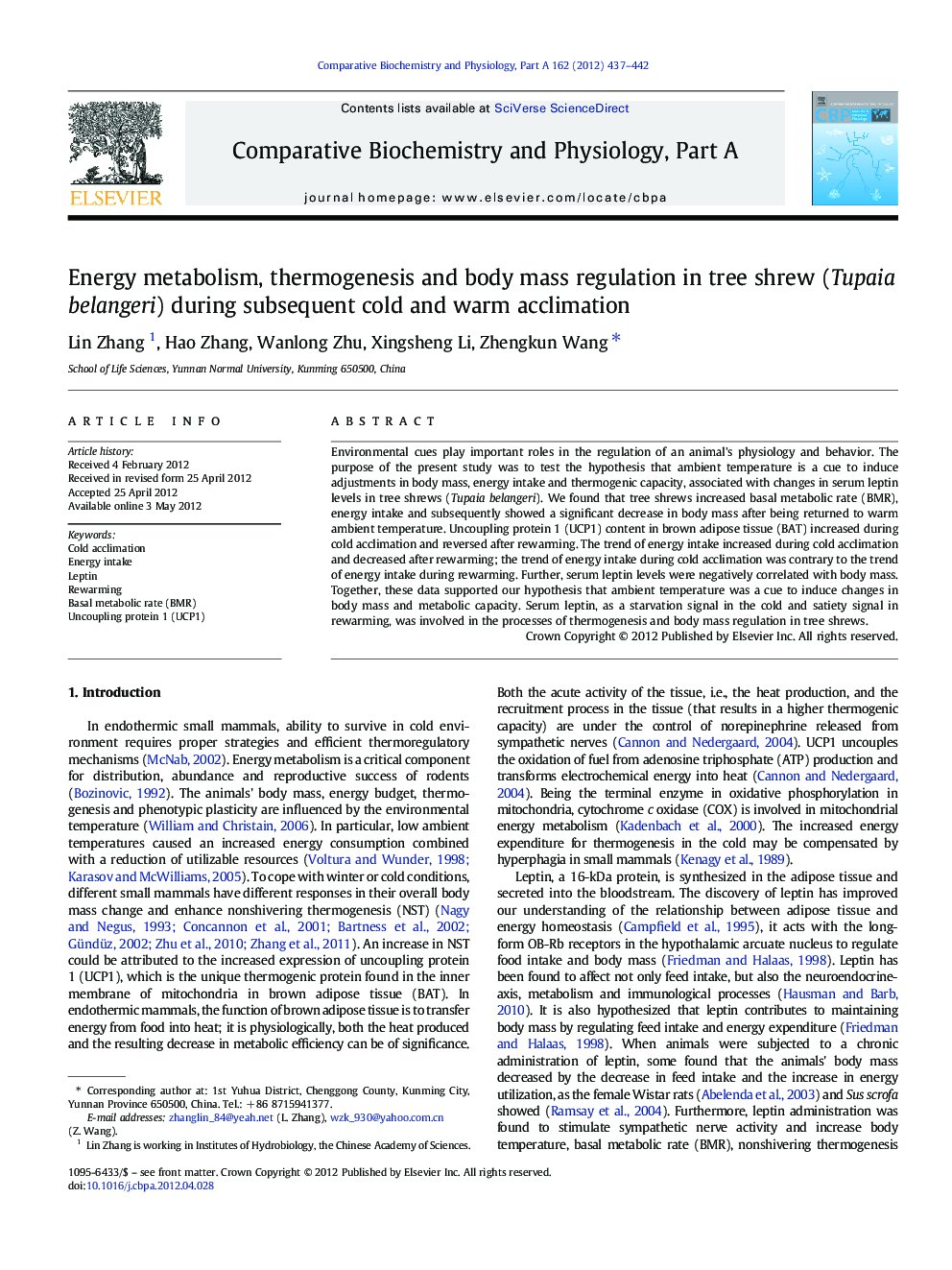| Article ID | Journal | Published Year | Pages | File Type |
|---|---|---|---|---|
| 1972626 | Comparative Biochemistry and Physiology Part A: Molecular & Integrative Physiology | 2012 | 6 Pages |
Environmental cues play important roles in the regulation of an animal's physiology and behavior. The purpose of the present study was to test the hypothesis that ambient temperature is a cue to induce adjustments in body mass, energy intake and thermogenic capacity, associated with changes in serum leptin levels in tree shrews (Tupaia belangeri). We found that tree shrews increased basal metabolic rate (BMR), energy intake and subsequently showed a significant decrease in body mass after being returned to warm ambient temperature. Uncoupling protein 1 (UCP1) content in brown adipose tissue (BAT) increased during cold acclimation and reversed after rewarming. The trend of energy intake increased during cold acclimation and decreased after rewarming; the trend of energy intake during cold acclimation was contrary to the trend of energy intake during rewarming. Further, serum leptin levels were negatively correlated with body mass. Together, these data supported our hypothesis that ambient temperature was a cue to induce changes in body mass and metabolic capacity. Serum leptin, as a starvation signal in the cold and satiety signal in rewarming, was involved in the processes of thermogenesis and body mass regulation in tree shrews.
